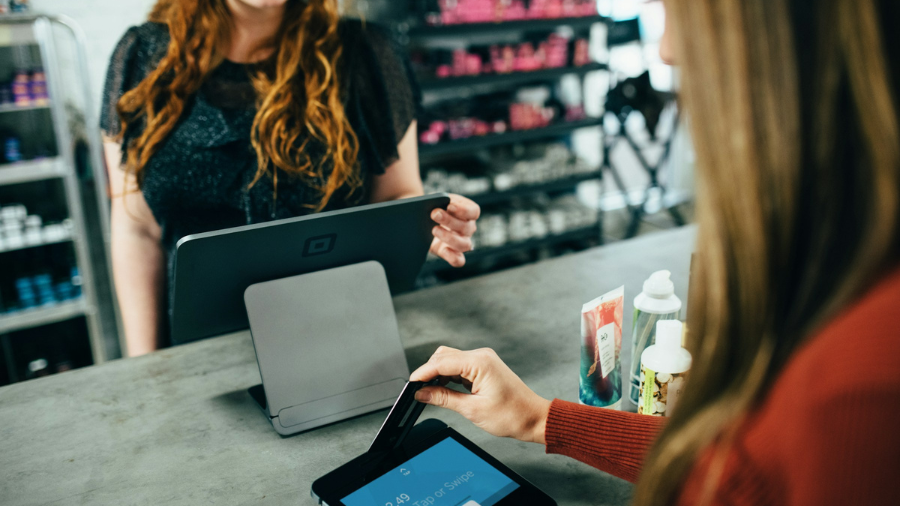Customer loyalty is one of the most powerful sales tools for a business. Regardless of what you’re selling, cultivating repeat customers and maintaining long-term partnerships offers a cost-effective approach to increasing sales volume.
The consumer marketing space has a good grasp on loyalty programmes, with reward schemes, partnership referrals and third party rewards a commonplace marketing tactic. Yet B2B businesses can often find themselves behind the curve on loyalty strategy. This is perplexing because B2B programmes can be just as powerful as their consumer counterparts – they simply require a different approach.
How did consumer brands build the edge?
Loyalty programmes have a natural fit with many consumer brands, which is why they are so widely used in the B2C market. Consumer brands have evolved past simple discount scheme loyalty plans and now often involve experiential rewards and third party treats that resonate with their customers. Their channels and ways of earning rewards have evolved, too. Rip Curl, for example, uses customers’ tracked surfing sessions to reward time spent in the water. In addition, gamification – the practice of involving some level of gaming and problem solving in the loyalty scheme – is constantly finding new ways to engage with their audience.
All these things fit into place easily with consumer brands, where purchases are often lower in value, but with a much faster purchasing decision and fewer layers of approval required!
However for B2B brands, the background is markedly different. So how, can B2B brands harness the creativity and proven results of their B2C counterparts in a way that sits naturally with their business and customer life cycle?
Adapting loyalty programmes for B2B audiences
For a successful loyalty concept, B2B brands need to consider their audience profiles, buying cycle and retention objectives carefully. There’s a golden rule in customer retention: everyone remembers a good experience. Investing in an exciting and genuinely valuable rewards service is a great step towards building good experiences and lasting client relationships.
When it comes to building loyalty among partners, clients and employees, remember that gifts and experiences always go further than discounts. B2B targets are more likely to respond to benefits – even small ones like a free coffee or movie tickets – than flatout cash incentives. That’s because the financial implications aren’t generally as much of a consideration – flash sales and time limited discounts don’t hold the same power as they do for consumers, because purchases are considered decisions with multiple layers of approval. It is far better for B2B brands to remain front of mind by investing time and resources that generate genuine care for the customers’ wellbeing.
B2B loyalty programmes are more suited to some less-used loyalty programmes strategies, such as perks. This means that there is no points system, tiers, or anything else that incentivises progression. Instead, members are privy to all benefits from the moment they enrol. B2B organisations can make great use of a perks approach to build a VIP club for their clients. Companies can still engage members through surveys or prize draws, but if they cease being a partner or don’t make a purchase within a specified timeframe, they will lose membership access.
Why haven’t B2B brands kept pace with consumer brands?
There are a few main reasons why B2B loyalty programmes generally aren’t as creative with their loyalty programme offerings as B2C businesses.
There is often a tendency to start off with the basic reward approach – discounts and freebies. What tends to happen next is a high volume of adoption in phase one, which steadily trails off. As B2B organisations begin to realise that cash incentives like this lose their appeal over time, there is a tendency for organisations to then just give up on rewards programmes altogether.
Coupled with this is the realisation that offering a gift, merchandise or experiential benefit as part of an extended loyalty programme will be costly. It’s another blocker for the success of B2B schemes, when in actual fact both these instances are real opportunities to set up the programme.
Finally, a major hurdle is the lack of partnerships to spread the load. This is really common in B2C marketing, where we often see like-minded and complementary brands linking up to offer joint rewards which have a mutual benefit. Yet in a B2B context, these partnerships are less forthcoming and harder to identify. Without a good network of appropriate partners to add their own gifts and rewards into the mix, companies often fall back on the easiest substitute: coupons. And, as we’ve seen, these rarely generate returns by themselves.
What does a good B2B loyalty scheme look like?
There are some really exciting examples of B2B loyalty schemes that can be used as inspiration. One example is Mailchimp’s insider programme which is aimed at freelance marketing experts and agencies. The system is simple: marketing professionals partner with a company to manage their client’s business through Mailchimp, and receive exclusive perks and expertise in exchange.
Members are eligible for insider training, tools to manage multiple clients, and invitations to members-only events. Meanwhile, long-standing members are elevated to partner status, with early access to new features and priority customer service.
This programme works because it solves a pain point for Mailchimp’s customers: they want to deliver a better service to their own clients, and Mailchimp gives them access to training to help them do that. Access to new tools, better customer care and opportunities to network and expand their own connections all help make Mailchimp’s customers perform better at their job; they get a true benefit from joining the programme.
As you can see, B2B brands can elevate their loyalty programmes by thinking carefully about what their audience truly needs. By making a great impression and providing recurring benefits, you make your business indispensable for another organisation and foster loyal brand advocates among their ranks.


 Whether you want to learn how to use LinkedIn, X or Facebook for marketing, or need to brush up on business skills like leadership, presentation skills or managing meetings, you will find something to enhance your professional skills with these on-demand courses.
Whether you want to learn how to use LinkedIn, X or Facebook for marketing, or need to brush up on business skills like leadership, presentation skills or managing meetings, you will find something to enhance your professional skills with these on-demand courses.